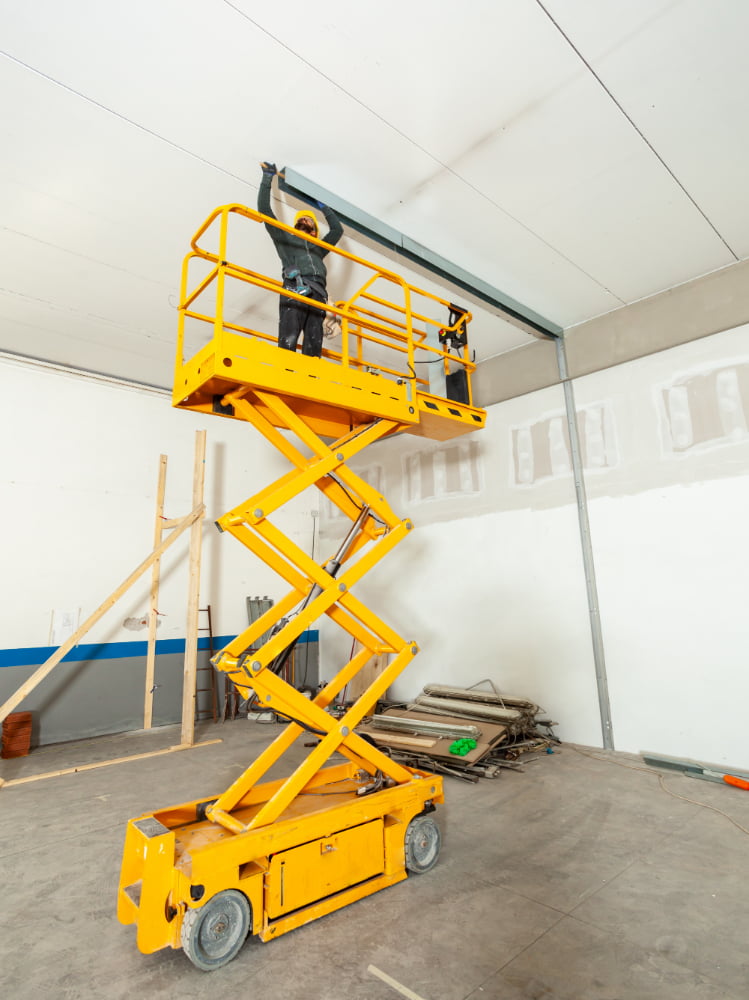Last updated on
In the bustling environment of a construction site, the seamless movement of materials is essential for the smooth progression of projects. While trucks are commonly used for hauling materials, there are instances where trucks might not be feasible or available.
However, innovative solutions and strategies can enable you to efficiently transport various materials around a construction site without relying on a truck. This comprehensive guide explores a range of alternatives and practical methods to tackle this challenge.
Wheelbarrows and Carts

Wheelbarrows and carts are simple yet effective tools for transporting materials on a construction site. These manually operated vehicles are beneficial for moving small loads of heavy materials, including an IBC tote, concrete, gravel, or bricks, over short distances.
Wheelbarrows are versatile and can navigate tight spaces, making them ideal for sites with limited access. Opt for wheelbarrows with sturdy construction and pneumatic tires for better stability and movement. Distribute weight evenly to prevent tipping and strain on the operator.
Hand Trucks and Dollies

Hand trucks and dollies are versatile tools that transport heavy items, equipment, and smaller loads across a construction site. They come in various types, such as appliance dollies and platform trucks, designed to suit different materials and requirements.
Use straps or bungee cords to secure materials and prevent them from shifting during transportation. Choose hand trucks and dollies with sturdy construction and large wheels for better stability.
Material Hoists and Load-Bearing Equipment

Material hoists are vertical lifting devices that can transport heavy materials to different construction site levels. They are handy for moving steel beams, roofing materials, and extensive tools to elevated areas.
Follow manufacturer guidelines for weight limits and safe operation. Regularly inspect the hoist’s cables, pulleys, and other components to ensure they are in good condition.
Consider using load-bearing equipment like aerial lifts, scissor lifts, or scaffolding when materials need to be moved at height. These devices provide a safe platform for transporting materials vertically and horizontally.
Ensure operators are trained and certified to operate aerial and scissor lifts. Routinely check the equipment’s components and perform maintenance according to manufacturer guidelines.
Conveyor Belts, Ropes, and Pulley Systems

Conveyor belts efficiently move bulk materials over long distances within a construction site. They can transport materials like sand, gravel, and concrete from one location to another, minimizing the need for manual labor.
Properly train operators on safely using conveyor belts and emergency shutdown procedures. Inspect the belts for signs of wear and tear when performing routine maintenance.
Meanwhile, rope and pulley systems can be improvised to move materials vertically or horizontally within a construction site. This method is convenient for transporting materials to elevated areas or across trenches.
Use strong ropes and sturdy pulleys to ensure safe and reliable operation. Regularly examine ropes for signs of fraying or wear and replace them as needed.
Skid Steer Loaders
Skid steer loaders, often equipped with attachments like buckets and forks, are compact machines that can efficiently move materials around a construction site. They are ideal for tasks that require transportation and lifting, such as moving dirt, gravel, or pallets of materials.
Make sure operators are trained and experienced in operating skid steer loaders safely. Perform regular scanning of the machine’s components and hydraulics to ensure proper functioning.
Pallet Jacks
Pallet jacks or pallet trucks are designed to move palletized materials quickly. They are beneficial for transporting goods like bags of cement, stacks of bricks, or crates of supplies.
Ensure the pallet jack’s forks are positioned correctly under the pallet for stability. Use caution when moving heavy loads, and know the machine’s weight capacity.
Sometimes, traditional manual labor can still be effective for transporting materials. Use proper lifting techniques to prevent injuries, such as bending your knees and keeping your back straight.
Avoid lifting objects that are too heavy for you. Ask for assistance or use mechanical aids instead. Wear appropriate personal protective equipment (PPE), gloves, and sturdy footwear.
While trucks are commonly used for material transport on construction sites, numerous alternatives can be equally effective, if not more so, depending on the project’s specific requirements. Each method has advantages and limitations, from wheelbarrows and carts to material hoists and skid steer loaders.
By understanding the available options and tailoring them to your project’s needs, you can efficiently move materials around a construction site without relying on a truck. Remember that safety is paramount in any material transport method, so always prioritize the well-being of your workers and adhere to proper operating procedures. With the right tools and strategies, you can ensure the smooth flow of materials and contribute to completing your construction projects.
Related reading:
Table of Contents





